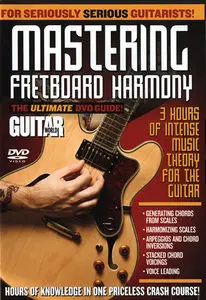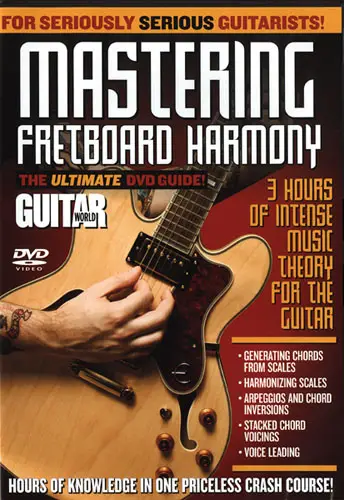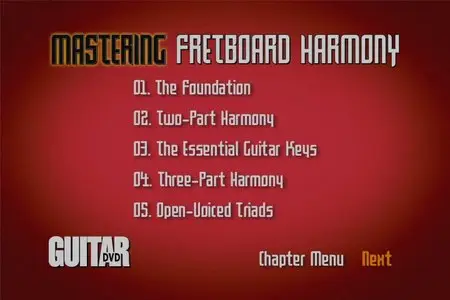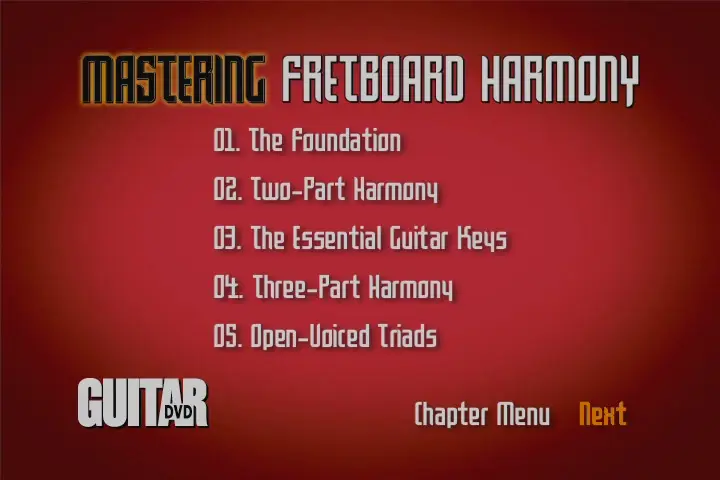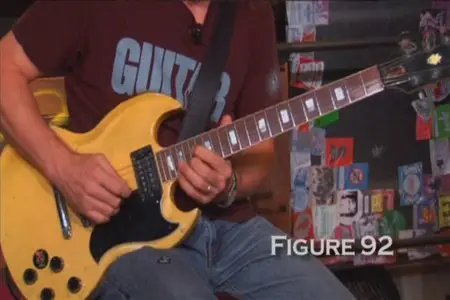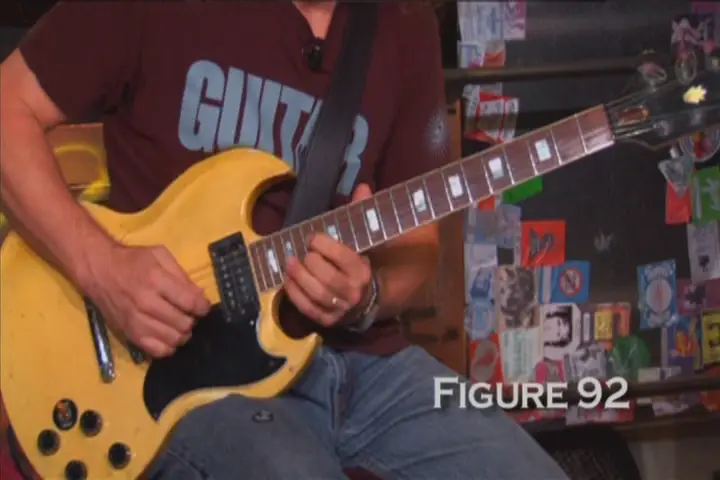Guitar World - Mastering Fretboard Harmony (2009)
DVD5 | English | 720x480 | VOB | ~7500 kbps | NTSC 29.970 fps | AC3 | CBR 192 Kbps | 03:21:07 | 3.51 GB
Genre: eLearning Guitar Theory
A beginner-to-intermediate guitar theory DVD for serious guitarists with a thirst to learn. 3 hours of intense music theory for guitar. Mastering Fretboard Harmony gives you three hours of intense music theory lessons in one priceless crash course. Designed for beginning-to-intermediate guitar players, the guitar tutorials on this instructional DVD will teach you how to generate chords from scales, harmonize scales, play arpeggios, chord inversions, employ voice leading, and much more.The Mastering Fretboard Harmony DVD is a Guitar World Online Store EXCLUSIVE. You won’t find this product anywhere else!Lessons include:
° Generating guitar chords from scales
° Harmonizing scales
° Arpeggios and chord inversions
° Stacked chord voicings
° Voice leading
screensheet
The Foundation
• The Musical Alphabet Up and Down Each String
• The Major Scale Formula
• The Major Scale Up and Down Each String
Two-Part Harmony
• The Major Scale Harmonized in Thirds on Adjacent Strings
• The Major Scale Harmonized in Sixths, “Mandolin Style”
• Sixths Played on Non-Adjacent Strings
The Essential Guitar Keys
• E Major, G Major and the “Friendliest” Major Keys
• Harmonizing the Major Scale in Fifths on Adjacent Strings, Key of C
• Fifths, Played on Non-Adjacent Strings
• The Major Scale Harmonized in Fourths
Three-Part Harmony
• The Major Scale Harmonized in Root-Position Diatonic Triads
• Root-Position Diatonic Triads, Key of G
• Triad Inversions, Key of C and Key of G
• 1st-Inversion Diatonic Triads, Key of C
• 2nd-Inversion Diatonic Triads, Key of C
• Triad Inversion, Key of E
Open-Voiced Triads
• C Major Inversions
• Harmonizing the Major Scale in 10ths
• Harmonizing the Major Scale with Open-Voiced Triads
“Stacked” Chord Voicings
• Stock Open Chords (a.k.a. “Cowboy Chords”)
• Barre Chords
Chord Progressions
• The I, IV, and V Chords of a Major Key
• Relative Minor and Major Chords
• Progressions Incorporating I, IV, V and vi (Relative Minor) Chords
• Using Inversions in Diatonic Chord Progressions
Dominant Seventh Chords
• Resolving the Tritone Interval
• Inversions of Dominant Seventh Chords
• Secondary Dominant Chords, Using with Inversions
Voice Leading
• The Minimal Movement Principle Applied to the I-IV-V Progression
• SUS4 Chord Voicings
• Non-Diatonic Chord Progressions (“Breaking the Rules,” part 1)
• The Minor-Drop Progression
• The Harmonic Minor Scale and Its Diatonic Triads
The Modes of the Major Scale
• Modes Played in Sixths and Thirds
• The Cycle of Fifths
• Moving Diatonically Through the Cycle
Diatonic Seventh Chords
• Jazz-Style Seventh Chord Voicings Without the Fifth
• More Non-Diatonic Chord Progressions (“Breaking the Rules,” part 2)
• Descending Voice Leading: The Major-Drop Progression
• Using First-Inversion Triads as “Pivot Chords”
PLUS: Bonus Section!
• Chord Voicings That Cut Through Heavy Distortion
• The Overtone Series (Harmonics)
Download
http://www.filesonic.com/file/...g_Fretboard_Harmony.part01.rar
http://www.filesonic.com/file/...g_Fretboard_Harmony.part02.rar
http://www.filesonic.com/file/...g_Fretboard_Harmony.part03.rar
http://www.filesonic.com/file/...g_Fretboard_Harmony.part04.rar
http://www.filesonic.com/file/...g_Fretboard_Harmony.part05.rar
http://www.filesonic.com/file/...g_Fretboard_Harmony.part06.rar
http://www.filesonic.com/file/...g_Fretboard_Harmony.part07.rar
http://www.filesonic.com/file/...g_Fretboard_Harmony.part08.rar
http://www.filesonic.com/file/...g_Fretboard_Harmony.part09.rar
http://www.filesonic.com/file/...g_Fretboard_Harmony.part10.rar
http://www.filesonic.com/file/...g_Fretboard_Harmony.part11.rar
http://www.filesonic.com/file/...g_Fretboard_Harmony.part12.rar
http://www.filesonic.com/file/...g_Fretboard_Harmony.part13.rar
http://www.filesonic.com/file/...g_Fretboard_Harmony.part14.rar
http://www.filesonic.com/file/...g_Fretboard_Harmony.part15.rar
http://www.filesonic.com/file/...g_Fretboard_Harmony.part02.rar
http://www.filesonic.com/file/...g_Fretboard_Harmony.part03.rar
http://www.filesonic.com/file/...g_Fretboard_Harmony.part04.rar
http://www.filesonic.com/file/...g_Fretboard_Harmony.part05.rar
http://www.filesonic.com/file/...g_Fretboard_Harmony.part06.rar
http://www.filesonic.com/file/...g_Fretboard_Harmony.part07.rar
http://www.filesonic.com/file/...g_Fretboard_Harmony.part08.rar
http://www.filesonic.com/file/...g_Fretboard_Harmony.part09.rar
http://www.filesonic.com/file/...g_Fretboard_Harmony.part10.rar
http://www.filesonic.com/file/...g_Fretboard_Harmony.part11.rar
http://www.filesonic.com/file/...g_Fretboard_Harmony.part12.rar
http://www.filesonic.com/file/...g_Fretboard_Harmony.part13.rar
http://www.filesonic.com/file/...g_Fretboard_Harmony.part14.rar
http://www.filesonic.com/file/...g_Fretboard_Harmony.part15.rar
No mirrors please


